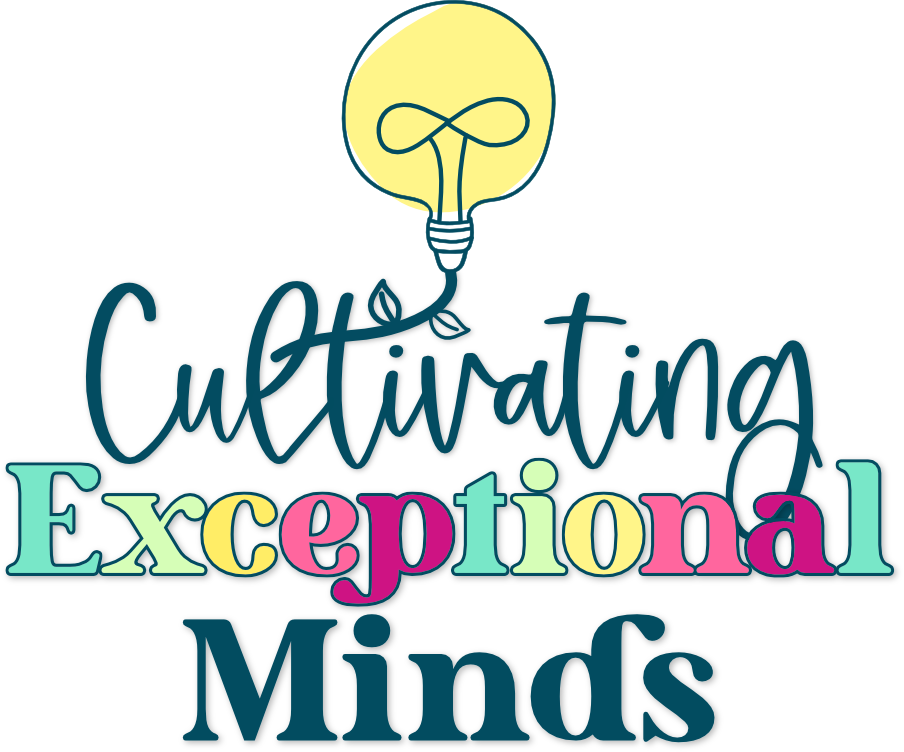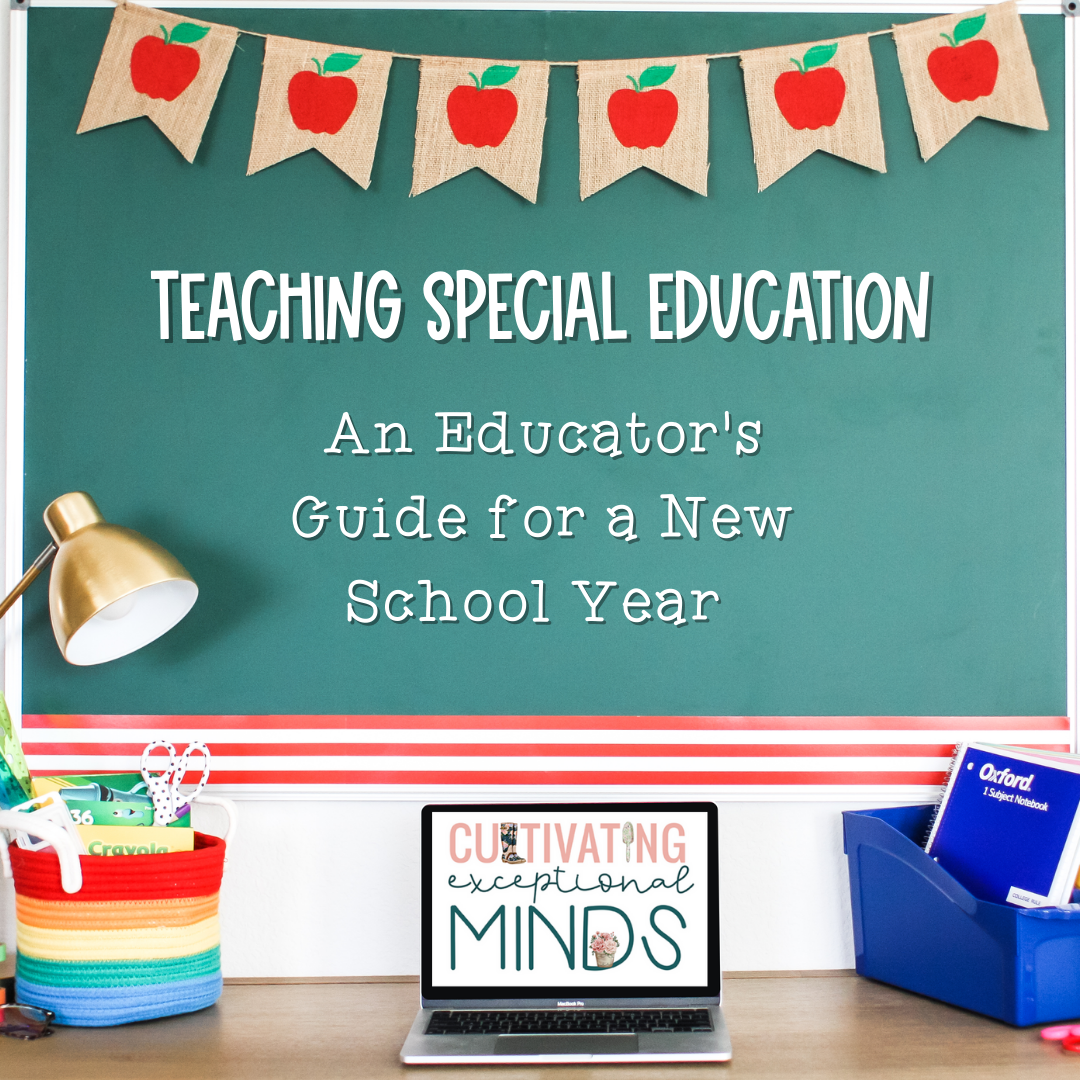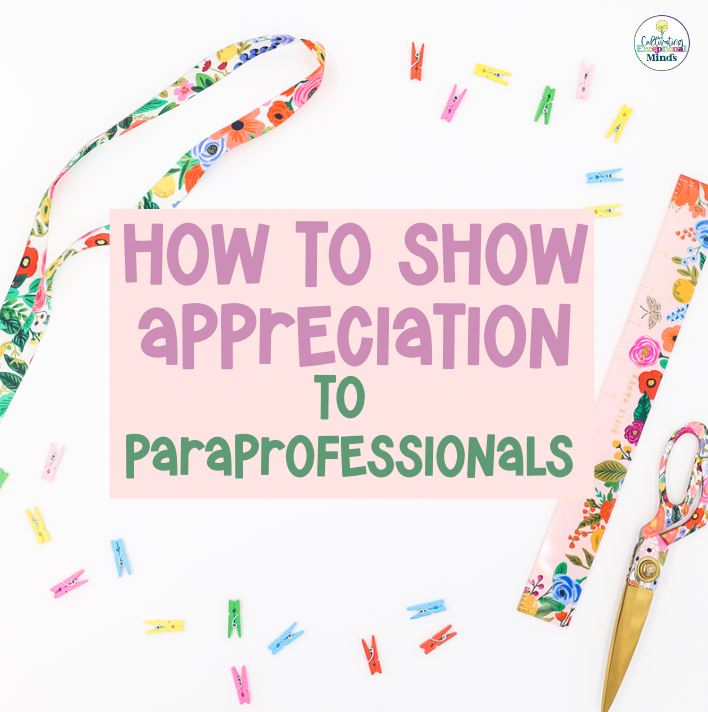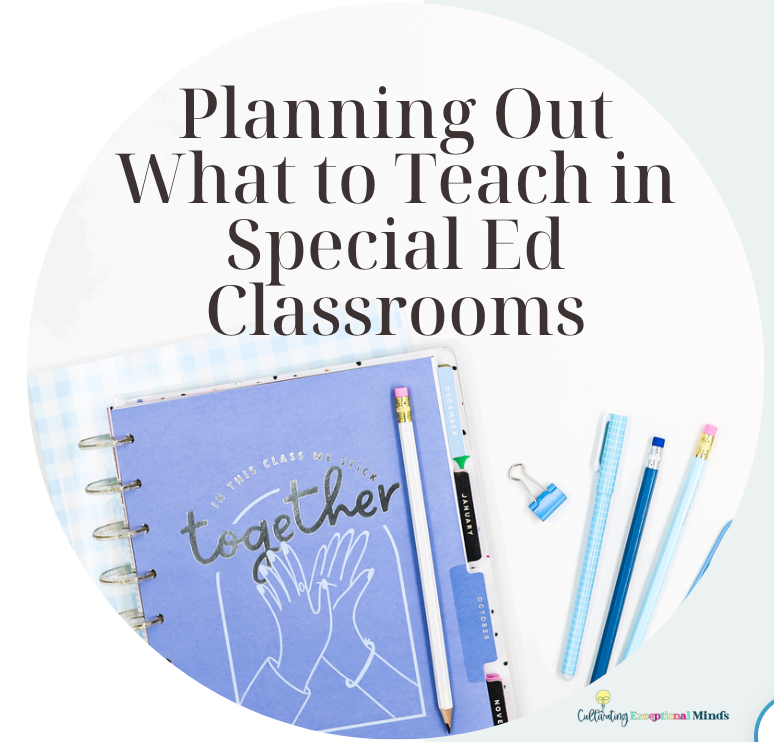Teaching special education is no small feat! As a special educator and case manager there are so many moving pieces that you need to have your pulse on. It can feel overwhelming! But, there are steps you can take to set yourself up for success right from the beginning of the school year.
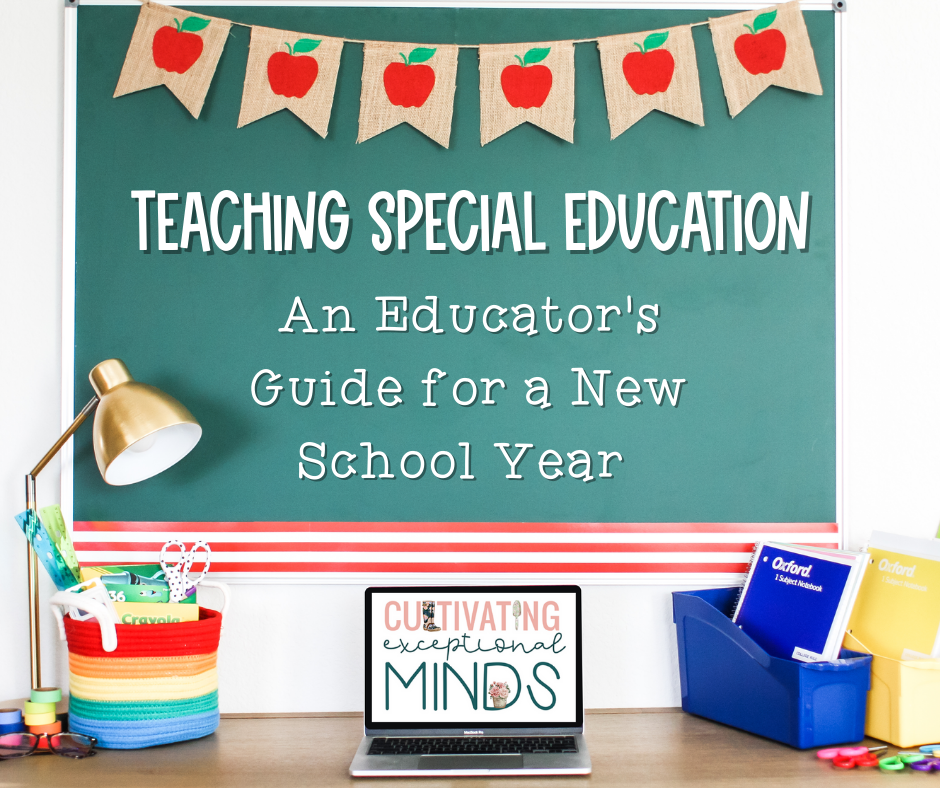
The name of the game for a successful school year as a special educator is prep. Here is your guide to everything you will want to prep and do for the new school year!
Focus on building rapport
If you want a smooth start to the school year, the number one area I suggest you spend your energy is building rapport. When teaching special education, we work with a lot of different groups of people in order to give our students the best education possible. This is why rapport building is critical. Here is how you can focus on building rapport with your students, parents, and paras to start your year off on the right foot!
With Students
Set yourself up for success with your students right from the first day by learning about each students’ interests. You can do this with a survey or scheduling time to chat and interact with each of your students. As you learn about each students’ interest make sure to take some quick notes because these interests can be powerful tools for connection and learning later in the year.
Besides just learning about their interests, make sure you show interest in their interests. Take some time to learn about the topics that make them happiest so that you can talk with them about it. All of our students are looking for connection (just like we are), so use their interests to begin building that relationship.
Once you have learned about their interests, make sure that you always interact with your students by getting on their level. This might mean kneeling down by their desk or sitting on the floor with them. This makes you less intimidating and sets you up to be a trusted person. Even if the student doesn’t like making eye contact, always try to look at your student’s face when talking with them. You want them to know that you are invested in interacting with them!
With Parents
Reaching out to parents BEFORE the year starts can truly help build rapport and make them feel like a valued member of their child’s team. Sending home a Meet the Case Manager Letter is a great way to start this process. In this letter you can introduce yourself, provide your contact information, and overview of their child’s goals, how progress will be reported on, etc.
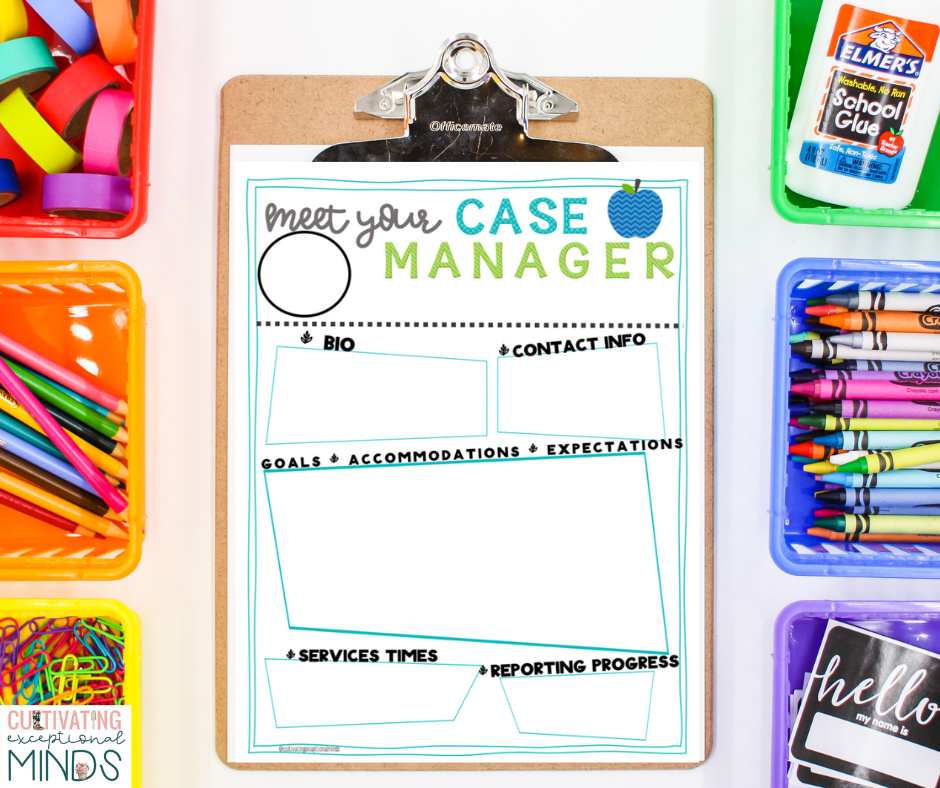
Though the logistics are important and one of the first steps towards building rapport, the magic really happens when you show genuine interest in their child. So always make sure to ask them questions. I do this at the beginning of the year (as well as before IEPs), by sending home a Parent Survey.
Once contact is established, make sure to chat with parents about the best mode for communication. For some families that might be email, for others it might be a communication log that goes back and forth to school. Whichever way is easiest, do your best to honor this for the family.
With Paras
Let’s face it. It is not easy being a supervisor to other professionals. There are a lot of moving pieces in a special education classroom and paraprofessionals can help you make your classroom a well-oiled machine. Here are some ideas for building rapport and a team atmosphere right from day one:
- Learn their name
- Find common ground by asking them about themselves
- Always be willing to lend a helping hand
- Set up a system for addressing concerns
Data collection systems for teaching special education
When you are teaching special education, one thing is for sure, you will have data coming out of your ears! This is a great problem to have as data helps us make informed decisions about the strategies we use with students, but boy can it be overwhelming.
So, before the school year begins make sure to review your students’ IEPs and decide on what data you will need to collect for each student. Most likely you will need sheets for each IEP goal as well as behavior charts.
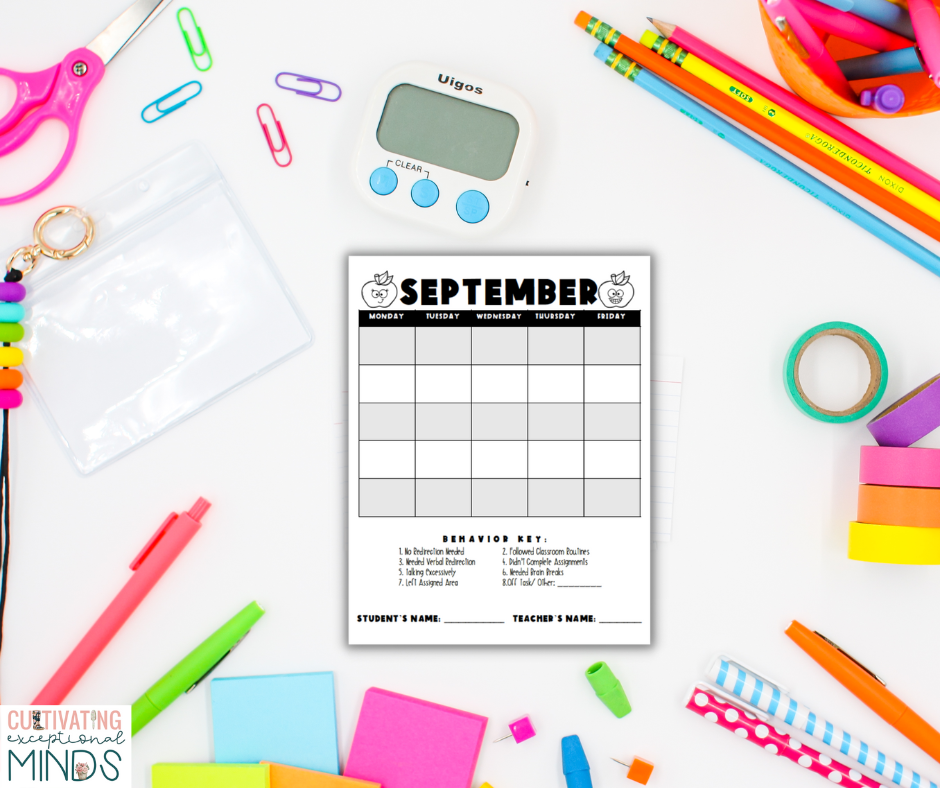
Learn more about effective data collection systems in this podcast episode!
Classroom set up
Having the right classroom set up can make all the difference when teaching special education. Here are the top 3 things I consider when setting up my room:
- How will students and adults move around the room?
- How will the majority of instruction take place?
- Do any of my students have special considerations (such as wheelchair access, history of eloping, etc.)
By reviewing each students’ IEP, I am usually able to answer all 3 of these questions and set up my room for success.
Sensory space
No matter the demographic of your students, I highly suggest considering setting up a sensory space in your classroom. This is simply a therapeutic space with equipment or resources that provide our students with special needs an appropriate kind of sensory input. It is a calming space when students get overwhelmed.
Contrary to popular belief, a sensory space does not need to be elaborate or expensive. Learn more about setting up a sensory space here.
Prep visuals

Once you have set up the desks, chairs, meeting spaces, etc. don’t forget to prep visuals! Having visuals ready to go from the first day will help your classroom run so much more smoothly. Start by visually labeling things and areas around the classroom. Then move on to creating student specific visuals. Check students’ IEPs for accommodations that include visual supports. Even if a child’s IEP doesn’t reference visual supports, you may consider making them a visual schedule or first/then board. These visuals can help students ease back into the routines of school.
Get organized for teaching special education
As special educators, there is SO MUCH we have to keep track of and keep organized: schedules, paperwork, IEP meetings. And that’s just the tip of the iceberg. Finding an organization system is critical! Here are the two organization systems, I use to help stay on top of everything and keep my sanity.
Digital Sped Planner
Sure you need a monthly calendar, but investing in a good special education based planner can make all the difference. Here’s what I suggest a good planner includes:
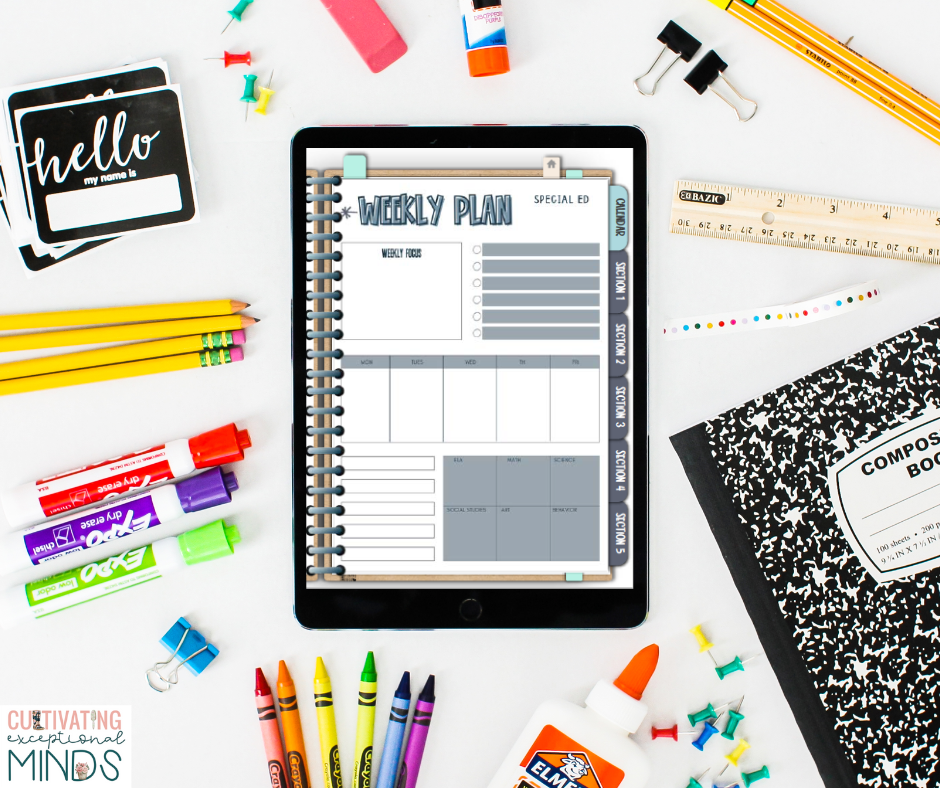
- Yearly Calendar
- Monthly Calendar overview
- Weekly Calendars
- Weekly Agendas
- Daily Agendas
- Standards pages (to input your own standards)
- Password Keeper
- IEP at a glance for each student
- Lesson plan templates
- Behavior Tracker
- Collaboration and communication logs
Truly the more you can keep in one place the less you will have to be shuffling papers and the less likely things will fall through the cracks. And having a digital planner, will eliminate all of those mountains of paper piling up on your desk! You can check out the exact digital sped planner I use here.
Caseload Tracker
Outside of a planner, it is important to be able to quickly reference each of your students’ important information from IEP goals, to allergies, to transportation. That is why I suggest having a caseload tracking document where you can easily input all of this information at the beginning of the year. These also come in handy if you need to have a sub in your classroom. They can easily review the caseload tracker to find out the most important info about each student they will be serving that day.
I keep a binder of caseload trackers organized by last name (or you could organize by class if you have multiple classes). Whenever I need to reference something, I grab the binder, flip to that students’ page and then I’m done!
Want to Make Teaching Special Education this New School Year a Little Easier?
Grab the Back to School Special Education Bundle! With this bundle you will be able to build rapport, get organized, set up your classroom and so much more with ease.

The bundle includes:
- Special education forms
- Basic behavior forms
- Parent survey
- Digital teacher planner
- Grading rubric
- Editable labels
- Toilet training visuals and data collection sheets
- Sign language poster
- 7 Steps to running a smooth IEP meeting
Don’t Forget to Pin These Back to School teaching Special Education Tips for Later!

